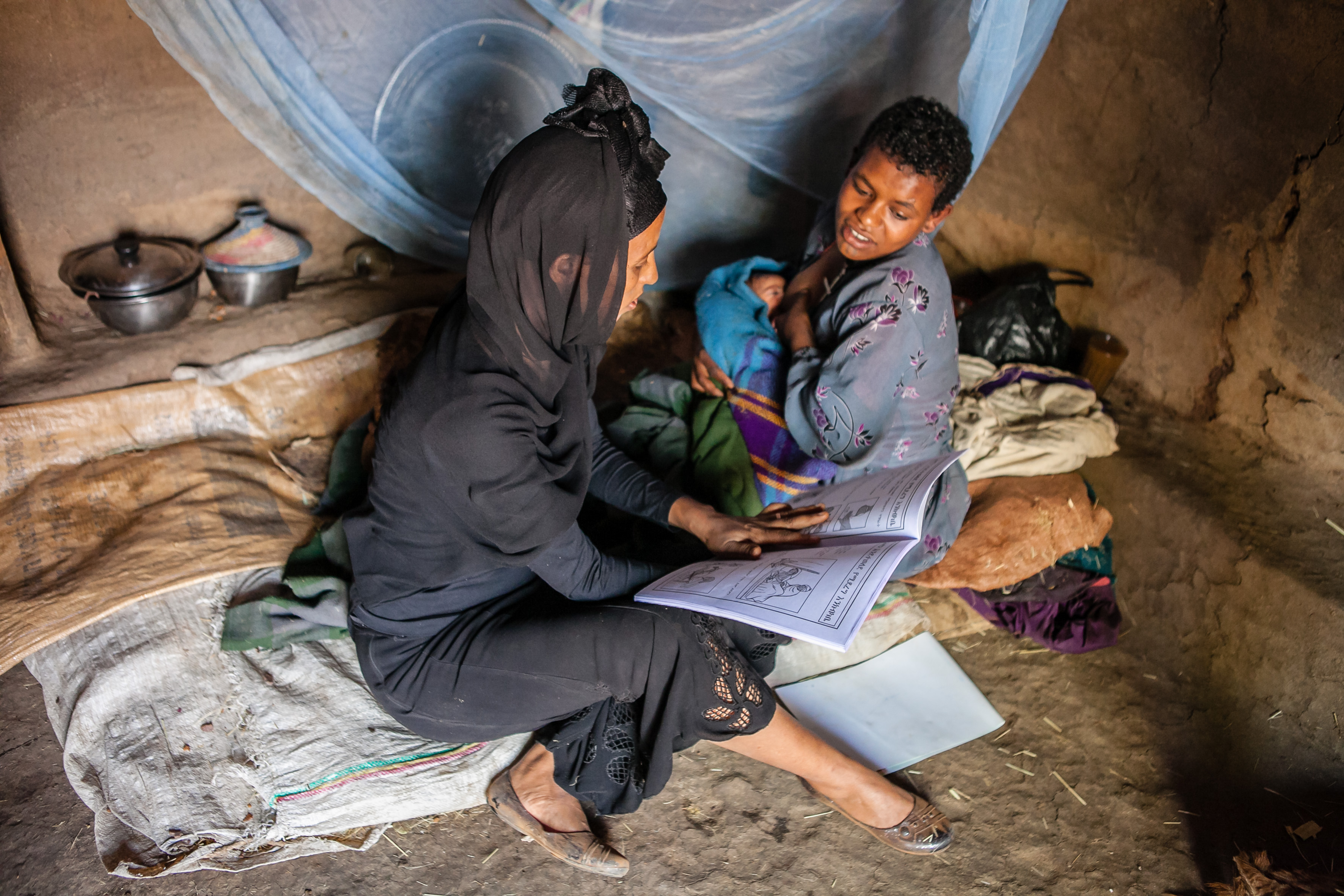Despite increasing popularity, there was little evidence to explain why quality improvement initiatives have varied results across settings. A better understanding of how quality improvement operates in different contexts was needed.
We tackled this problem in three ways, including examining the mechanisms through which quality improvement collaboratives worked, the influence of local context on quality improvement, and investigating how the Quality of Care Network functioned in Ethiopia.
Understanding quality improvement collaboratives in Ethiopia
A health worker supports a mother in Ethiopia.
Quality Improvement Collaboratives (QIC) are a common approach to bridging the quality of care gap in health facilities but little is known about implementation realities, especially in low-income settings. Implementation often occurs with little consideration of the mechanisms of change or the influence of context, and this may explain why QICs have had varied impact. A better understanding of QIC processes would help determine if they are suitable for all contexts and what adaptations are needed.
Investigating the quality of care network in Ethiopia

IDEAS/Paolo Patruno 2015.
Under the leadership of WHO, the Quality of Care Network (QCN) was established in 2017 in 11 low- and middle-income countries to improve maternal, newborn, and child health. In Ethiopia, the goals of QCN were aligned with government policy and national-level engagement was strong. There was a good fit between QCN activities and past experiences of quality improvement in the country, and to a large extent the Network was institutionalised within the health system. However, two key limitations were apparent: (i) more engagement was needed at the sub-national level; and (ii) government financial commitment to continue activities beyond the initial implementation period was lacking. As a result, it is not likely that QCN would be sustained in its current format, although some characteristics of the Network were likely to be carried forward.
Understanding quality improvement in Lagos State, Nigeria

Quality improvement collaboratives are increasingly popular in low- and middle-income settings, often being implemented on a large scale. However, relatively little is known about the influence of context on implementation; consequently, new implementers may not benefit from the knowledge of what worked, what was adapted, and why. Working with partners in Lagos State, Nigeria, we studied the implementation of a complex quality improvement initiative that was driven by government and supported by a non-governmental organisation. Evidence revealed considerable influence of internal and external contextual factors, necessitating adaptations throughout implementation.
All Understanding Quality Improvement related outputs can be found under Resources by selecting that theme from Research Areas.
